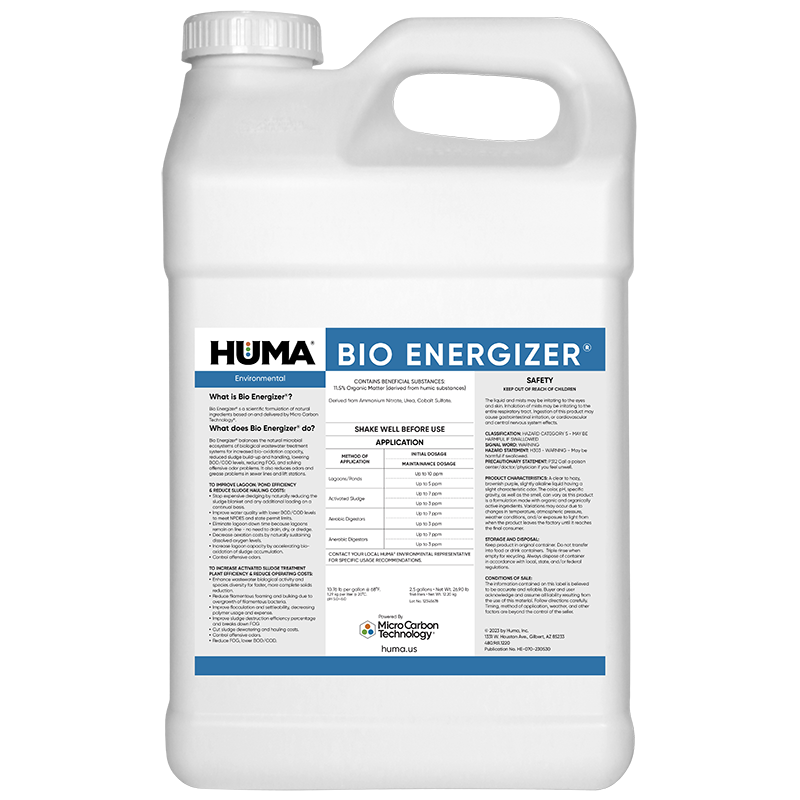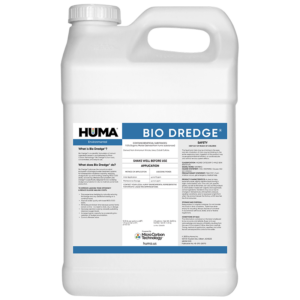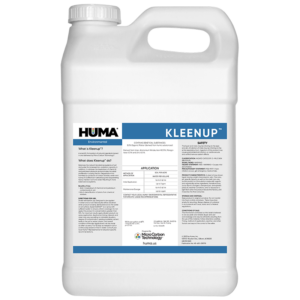Bio Energizer
Benefits of Use:
- Reduces noxious odors
- Breaking down of fats and greases
- Drying beds dry faster
- Reduces sludge buildup in lagoons
- Sustains dissolved oxygen levels
- Decreases mechanical aeration and energy costs
- Speeds organic matter composting while improving quality
- Lowers sludge dewatering and hauling costs
- Reduces filamentous foaming and bulking
- Improves flocculation and settleability
- Minimizes upsets
- An economical alternative to mechanical sludge removal eliminating handling costs and out-of-service time
FAQs
Related Videos
Huma Environmental Bio Energizer Industrial
Huma Environmental Bio Energizer Industrial video
Learn More
Huma Environmental Wastewater Treatment Products
Huma Environmental wastewater treatment products are meant to work with all of the systems to proactive with biology. Our products stimulate the biology that is already present. A product line that stimulates what's already present
Learn More
Related Products
Related Case Studies

Lagoon Study Shows Sludge Layer Biologically Active and Responsive to Reduction Using Bio Energizer®
Summary In this study, a one-year bioremediation plan was implemented for a municipal wastewater treatment facility with 2 primary lagoons that were at risk of upset and in which wastewater processing capacity was reduced due to an increased sludge layer. Specific changes in strata microbial life were tracked through ATP and DNA analysis at quarterly...

Bio Energizer® Toxicity Testing
Abstract Bio Energizer® is frequently used to facilitate bioremediation of wastewater. A study was conducted by an independent laboratory to measure possible negative effects Bio Energizer® might have on a freshwater test species (rainbow trout). Using EPA-approved methodology to evaluate Bio Energizer®, the lab administered the product at 10 ppm to a test tank and...

Bio Energizer® Reduces Sludge at Small Municipal Facility
Problem A small town in Utah (pop. 1,800) had a municipal wastewater system with a flow rate of 192,000 gallons per day. The system included a series of four lagoons that tapered to a depth of 6 feet, although at this time only Ponds 1 and 2 were being evaluated for treatment as they were...
Related Blog Posts

Ducks Walking on Water?
by Heather Jennings, PE Bio Energizer® Reduces Sludge Over 40% at Utah Municipal WTP The case study described below was a project that I worked on with a small-lagoon municipal system so overwhelmed with solids that state action was being taken. The ducks on the other side of the lagoon from me literally looked as...

Micro Carbon Technology® for a Greener, Cleaner World
Probiotic Solutions® products are manufactured with our exclusive, proprietary Micro Carbon Technology® that consists of very small carbon-rich molecules. These ultra-fine molecules help efficiently reduce biosolids, improve settleability and promote dissolved oxygen.

Where Did the Water Go?
By Jared Alder, MS In England, it is estimated that around 700 million gallons of water—the equivalent of 1,200 Olympics–size swimming pools—is lost every day to leaks in the country’s vast water system. Often the water just rises out to the pavement and runs down the road. Utilities spend countless hours and a great deal of money and other resources trying to locate the sources of leaks, often tearing up roads multiple times in...






